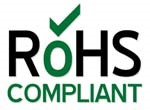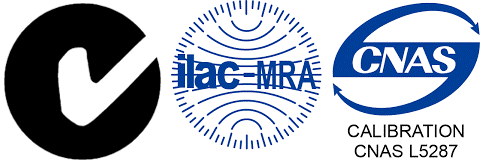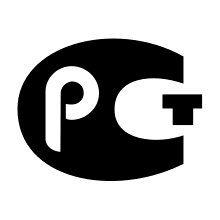
The FCC Declaration of Conformity or the FCC label or the FCC mark is a certification mark employed on electronic
products manufactured or sold in the United States which certifies that the electromagnetic interference from the device
is under limits approved by the Federal Communications Commission.
The FCC label is found even on products sold outside the US territory, because they are either products manufactured
in the US and had been exported, or they are also sold in the US. This makes the FCC label recognizable worldwide even to
people to whom the name of the agency Federal Communications Commission is not familiar.

CE Marking is the symbol as shown on the top of this page. The letters "CE" are the abbreviation of French phrase
"Conformité Européene" which literally means "European Conformity". "CE Marking" is now used in all EU official documents.
CE Marking on a product is a manufacturer's declaration that the product complies with the essential requirements
of the relevant European health, safety and environmental protection legislations.

The definition and aim of the RoHS directive is quite simple. The RoHS directive aims to restrict
certain dangerous substances commonly used in electronic and electronic equipment. Any RoHS
compliant component is tested for the presence of Lead (Pb), Cadmium (Cd), Mercury (Hg),
Hexavalent chromium (Hex-Cr), Polybrominated biphenyls (PBB), and Polybrominated diphenyl ethers
(PBDE). For Cadmium and Hexavalent chromium, there must be less than 0.01% of the substance by
weight at raw homogeneous materials level. For Lead, PBB, and PBDE, there must be no more than
0.1% of the material, when calculated by weight at raw homogeneous materials. Any RoHS compliant
component must have 100 ppm or less of mercury and the mercury must not have been intentionally
added to the component. In the EU, some military and medical equipment are exempt from RoHS
compliance.

The C-Tick is an identification trademark registered to the Australian Communications Media
Authority (ACMA). The C-Tick mark signifies that the labeled electronic device is compliant
with applicable electromagnetic compatibility (EMC) requirements. The C-Tick mark also provides
a traceable link between the equipment and the supplier and is a pre-requisite of the Australian
Government to legally sell the product in Australia.

The GOST-R mark is a mandatory certification mark for all electrical products to be shipped
into Russia. The laws of the Russian Federation prescribe conformity of products to the Russian
safety standards (GOST-R). A product without the GOST-R-conformity mark may be rejected at the
borders of the Russian Federation.
The GOST-R certificate is issued following technical evaluation of your company's products to
ensure compliance to Russian safety regulations. The GOST-R Certificate is valid for three years
and a license to use the GOST-R mark is valid for one year and renewed with an annual factory
inspection.

The National Intellectual Property Administration, also known as the Chinese Patent Office,
is the patent office of the People's Republic of China.
it was founded in 1980, as the Patent Office of the People's Republic of China, before changing
its name to "State Intellectual Property Office" (SIPO), and then to "National Intellectual
Property Administration”. It is responsible "for patent work and comprehensively coordination
of the foreign related affairs in the field of intellectual property.





